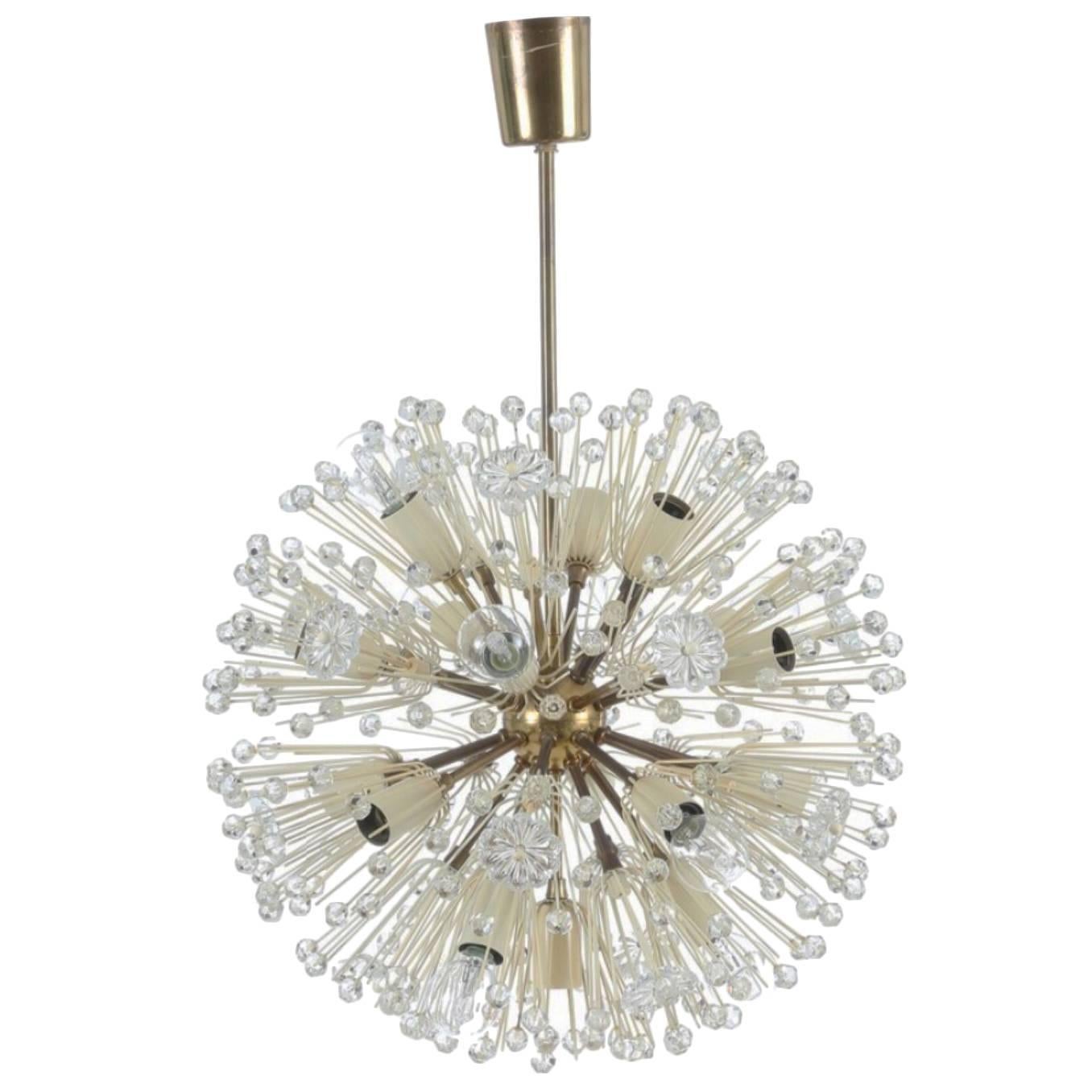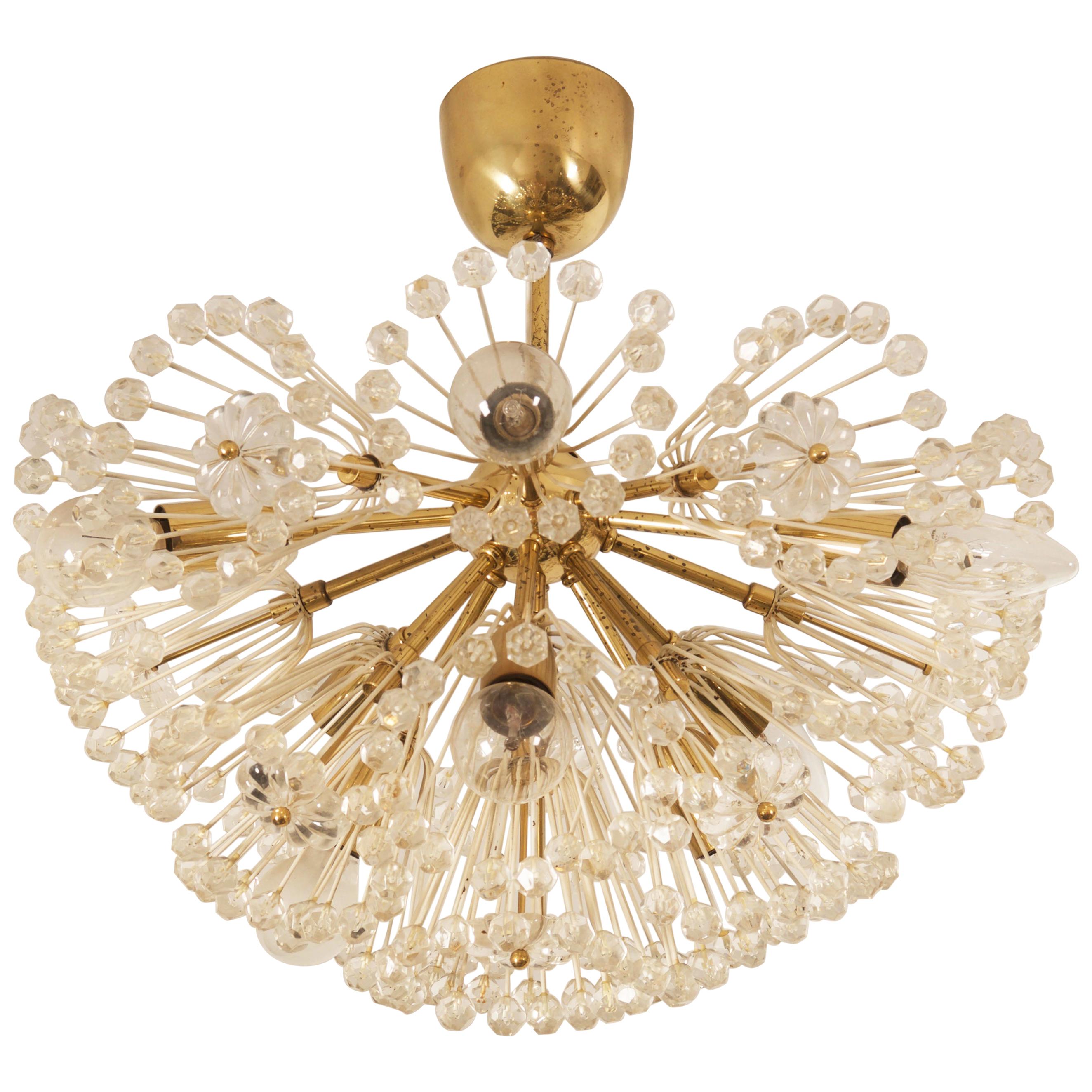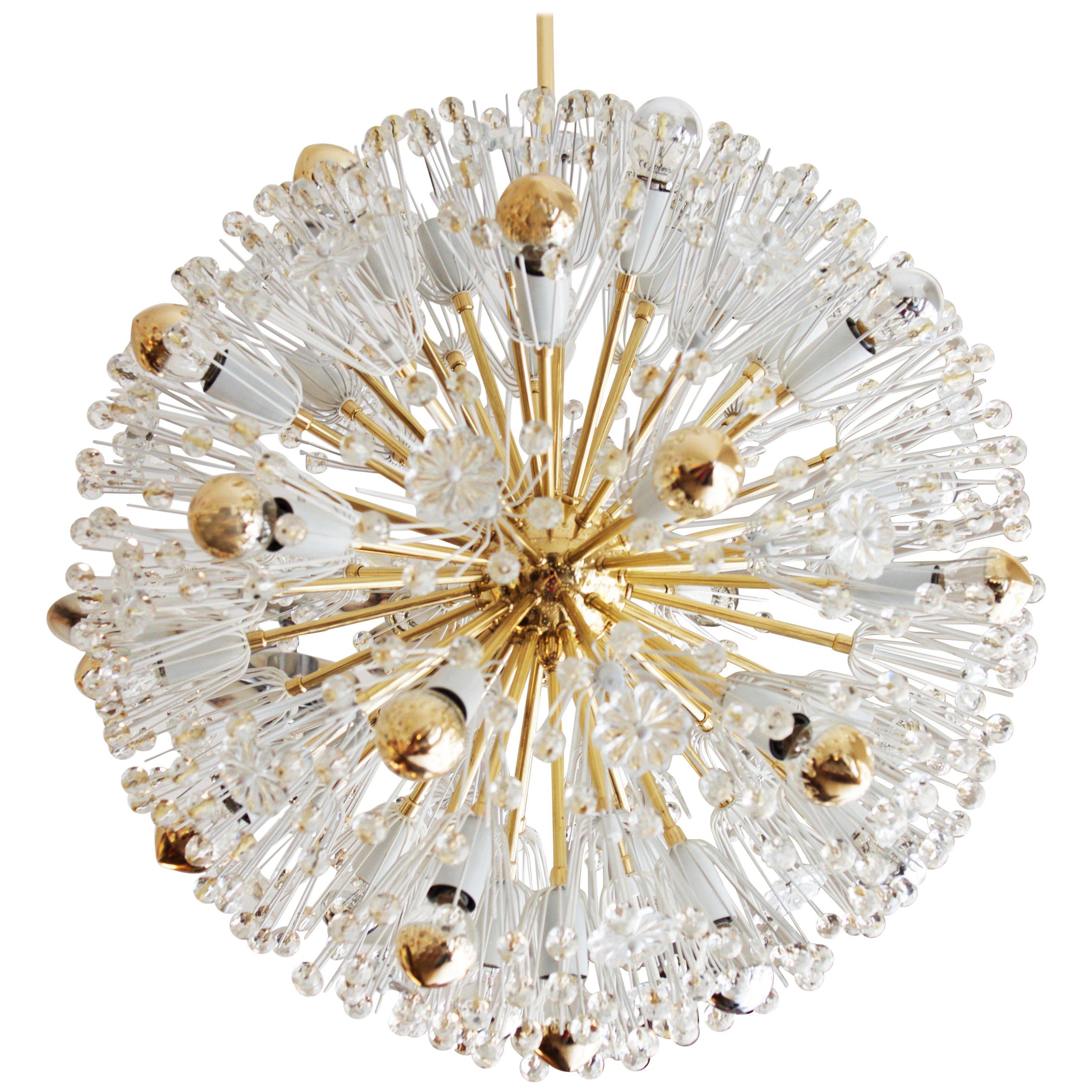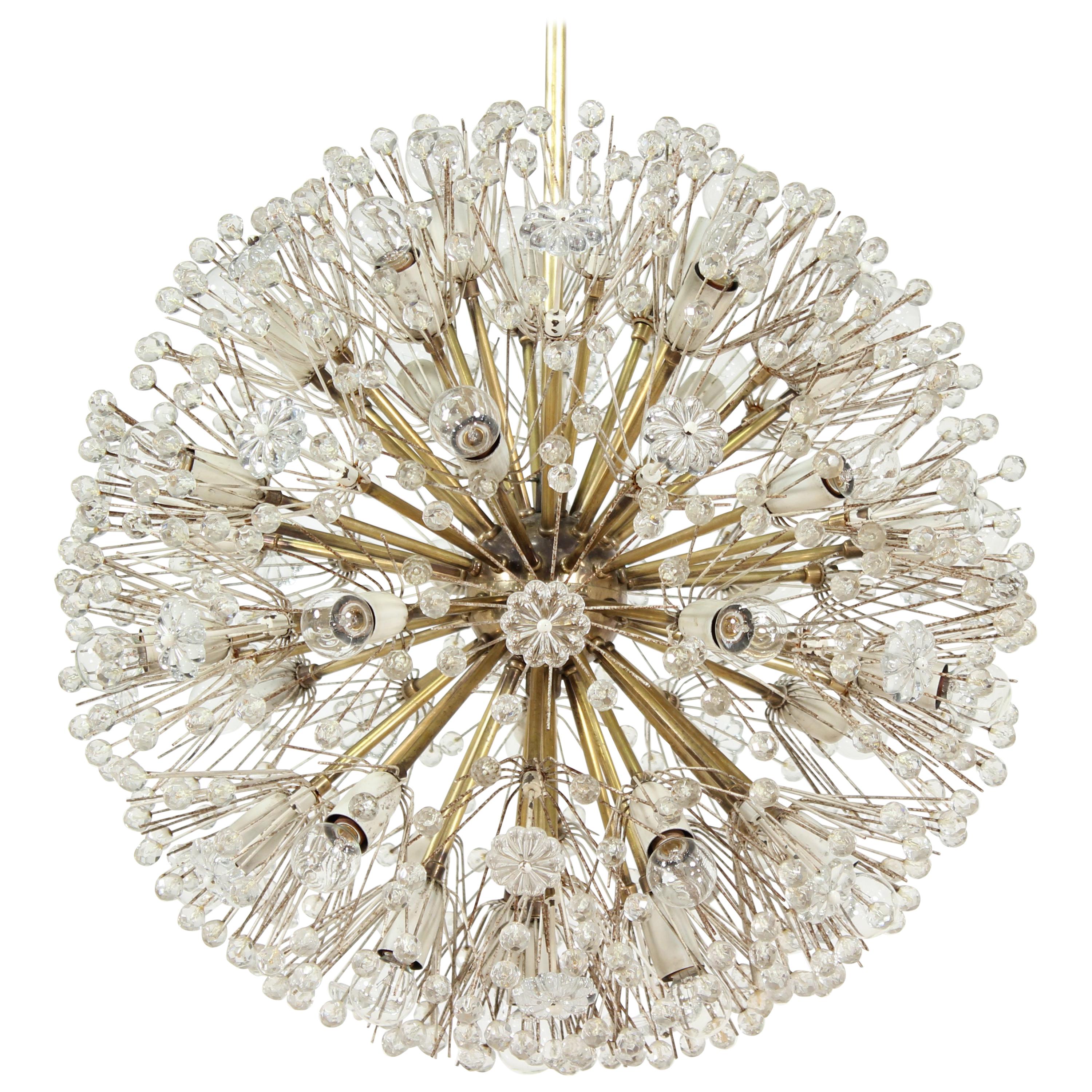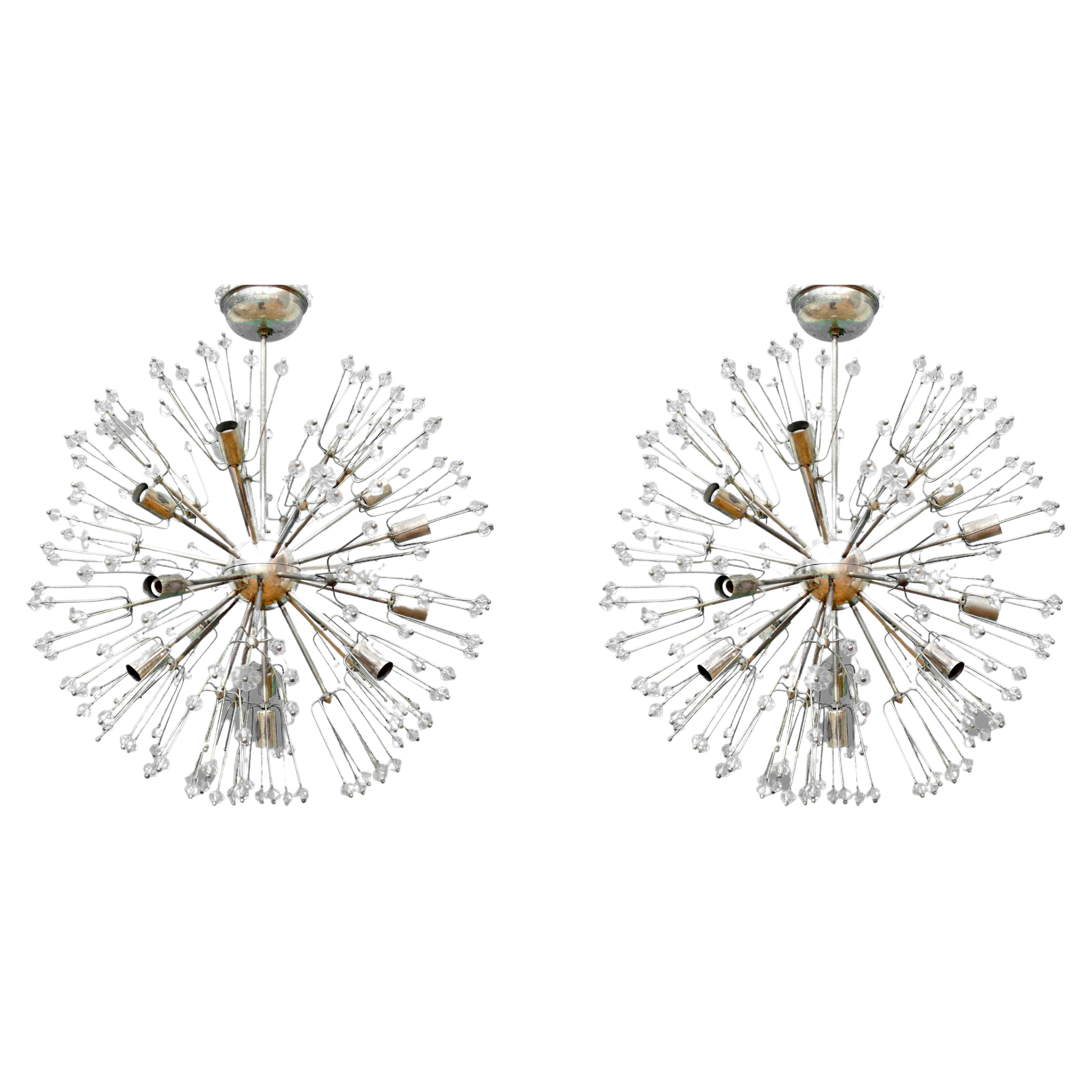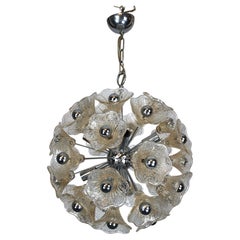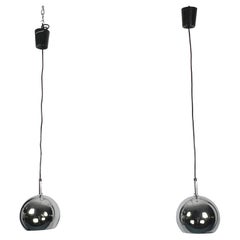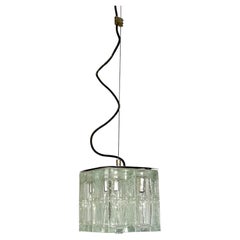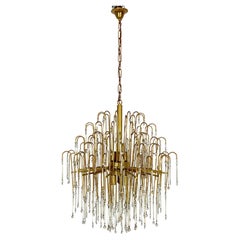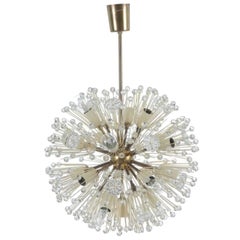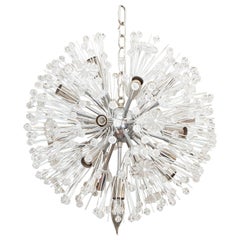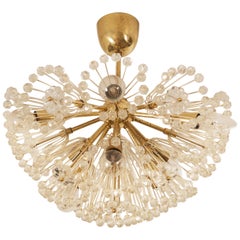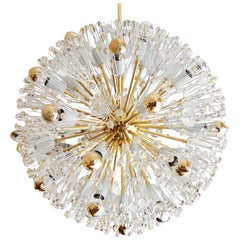Emil Stejnar, Chrome and Glass Sputnik from 70s
About the Item
- Creator:Emil Stejnar (Designer),Kalmar Lighting (Maker)
- Dimensions:Height: 37.41 in (95 cm)Diameter: 17.72 in (45 cm)
- Style:Space Age (Of the Period)
- Materials and Techniques:
- Place of Origin:
- Period:
- Date of Manufacture:1970
- Condition:Wear consistent with age and use. Good vintage condition for this chrome and lacquer sputnik designed by Emil Stejnar and produced from Kalmar during the 70s.
- Seller Location:Catania, IT
- Reference Number:1stDibs: LU7225231740342
Emil Stejnar
It’s not often that one résumé can include hermetic magician, astrologer, gold and silversmith and lighting designer. It’s fair to say that Austrian Emil Stejnar may be the only one to claim all of the skills above.
The clamor for mid-century modern design has been at a fever pitch since, well, pretty much the mid-twentieth century. And while many of the era’s furniture makers have gained recognition over time, many designers remain obscure. Emil Stejnar is one such designer.
Born in Vienna in 1939, Stejnar trained in goldsmithing and silversmithing and opened a jewelry workshop in Sweden. Eventually, he began to translate his metal skills to light fixtures.
Vintage Emil Stejnar chandeliers and mirrors are practically jewelry themselves, featuring materials like 24-carat gold-plated brass and Austrian crystals. He had a penchant for symmetrical, rounded forms, often emulating starbursts, snowflakes or floral blossoms in his designs.
Stejnar found a partner in Austrian manufacturer Rupert Nikoll, which made an extensive amount of the designer’s astonishingly precious pieces. In fact, the biggest claim to glory for the brand, which was established in Vienna in the early 1900s, owes to Stejnar’s work.
While it seems that any lighting fixture having a starburst shape and numerous bulbs on the ends was dubbed “Sputnik” in the Cold War era, one of Rupert Nikoll’s most famous designs is the Sputnik pendant lamp, created in the 1960s by Stejnar.
With several lighted spokes extending out in every direction, forming a shape similar to a dandelion puff, Stejnar's Sputnik pendant lamp earned the nickname “Pusteblume,” or “Dandelion” in English. Many imitators have replicated the Sputnik design, but the originals are highly valued by interior designers and collectors of Space Age design.
Find vintage Emil Stejnar chandeliers, wall lights, floor lamps and other furniture on 1stDibs.
Kalmar Lighting
In 1881, Julius August Kalmar founded Kalmar, a Viennese company that produced handcrafted objects of cast bronze. Kalmar developed a fine reputation and exhibited internationally often, but it was Kalmar’s son, Julius Theodor Kalmar, who took over in 1913 and made the company shine with its modernist lighting.
Having studied at the Birmingham School of Art and Design and under the Austrian architect Josef Hoffmann at the Vienna School of Applied Arts, Julius was deeply inspired by the shift to modernity taking place in Europe and sought to work with the leading architects and designers of his time, including Austrian Werkbund architects Josef Frank and Oskar Wlach as well as Ernst Plischke, Clemens Holzmeister and Oswald Haerdtl. Similar to the Wiener Werkstätte cooperative cofounded by Hoffmann that prized materials, form and function, Kalmar viewed his company’s lighting fixtures as “quite humble things” meant to “fit in and serve their purpose of functionally illuminating spaces without glare.”
In 1925, Kalmar began selling in Haus und Garten, the forward-looking decor shop founded by Frank and Wlach. By 1931, a close partnership with the Austrian Werkbund association of architects, artists and craftsmen allowed the company to realize its vision of early 20th-century modernity — a distinctly Viennese pairing of traditional workmanship with contemporary technology. These collaborations included chandeliers and other fixtures using traditional materials such as glass, bronze and brass while focusing on function over ornamentation. As the company grew, so too did the scope of its projects, and soon Kalmar was installing extravagant chandeliers for the Vienna Opera, the Burgtheater, Vienna stock exchange and other sites.
Under the guidance of Rudolf Calice, Julius Theodor Kalmar’s son-in-law, the 1960s saw Kalmar’s popularity grow, thanks in part to the success of more decorative pieces like the ice-glass fixtures created with Austrian sculptor Karl Gruber. Thomas Calice, the great-grandson of Kalmar’s founder, led the company in the 1990s and its expansion to international lighting projects while shifting away from serial production. In 2009, Thomas’s son August Chalice established Kalmar Werkstätten to produce fixtures that reference the Kalmar archives but also feature updates on the iconic designs. Kalmar continues to produce bespoke fixtures while also working on custom lighting projects around the world, from cruise ships to the Burj Khalifa.
On 1stDibs, find a collection of vintage Kalmar lighting that includes wall lights, floor lamps and other fixtures.
- ShippingRetrieving quote...Shipping from: Catania, Italy
- Return Policy
More From This Seller
View AllLate 20th Century Italian Mid-Century Modern Chandeliers and Pendants
Chrome
Mid-20th Century Italian Space Age Chandeliers and Pendants
Chrome
Vintage 1970s Italian Modern Chandeliers and Pendants
Murano Glass
Late 20th Century Italian Mid-Century Modern Chandeliers and Pendants
Brass
Late 20th Century Italian Mid-Century Modern Chandeliers and Pendants
Chrome
Late 20th Century Italian Mid-Century Modern Chandeliers and Pendants
Brass
You May Also Like
Vintage 1950s Austrian Mid-Century Modern Chandeliers and Pendants
Brass
Vintage 1960s Mid-Century Modern Chandeliers and Pendants
Chrome, Metal
Vintage 1960s Austrian Mid-Century Modern Chandeliers and Pendants
Brass
Vintage 1950s Austrian Mid-Century Modern Chandeliers and Pendants
Brass
Vintage 1960s Austrian Mid-Century Modern Chandeliers and Pendants
Brass
Vintage 1950s Austrian Mid-Century Modern Chandeliers and Pendants
Metal, Chrome
